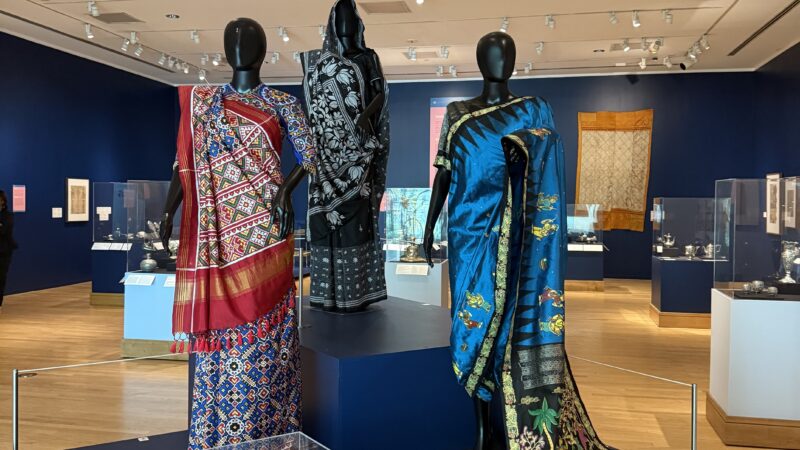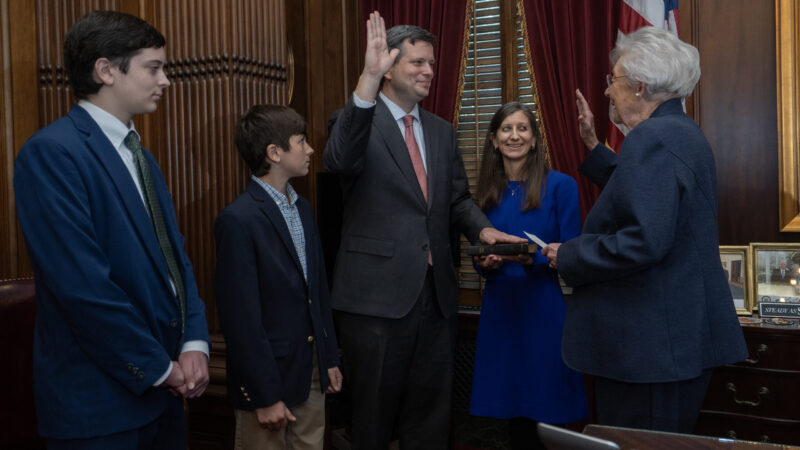Backyard feeders changed the shape of hummingbird beaks, scientists say
A new study suggests that Anna’s Hummingbirds in the western United States are not only keeping up with human influence on their habitat, they’re thriving.
According to a recent study in Global Change Biology, a journal focused on environmental change, the use and prevalence of hummingbird feeders — like those red and clear plastic ones filled with homemade sugar water — changed the size and shape of the birds’ beaks. The range of the hummingbird also spread from the southern part of California all the way up the West coast into Canada.
“Very simplified, the bills get longer and they become more slender, and that helps to have a larger tongue inside that can get more nectar from the feeder at a time,” says Alejandro Rico-Guevara, a professor of biology at the University of Washington and senior author on the study.
The study, which had been in the works since 2019 and had 16 collaborators across 12 different institutions, also found that the beaks of males grew pointier over time to allow them to fight off competing males at the feeders. The hummingbirds also moved further north, eventually showing up in much cooler temperatures as they chased the growing popularity of the bird feeders. The study also noted the influence of the growing abundance of eucalyptus forests, another human-influenced food source for the hummingbirds as the trees were introduced to California from Australia in the 1900s.
Hummingbird history
During the research process, the study authors sifted through newspaper archives in California, tracking hummingbird feeder mentions by county and comparing that to census data and scientific bird counts.
They also studied museum specimens of Anna’s Hummingbirds dating back to the 1800s — well before the popular outdoor bird feeders existed — providing a range of beaks to measure over about 10 generations of the species.
Simon English, a Ph.D. candidate at the University of British Columbia and one of the co-authors of the study, helped comb through all the data to figure out how it all fit together.
“The contribution of the feeders was remarkable,” he says. “As far as a single contribution to an effect that humans have, it was very strong, very surprising.”
Bird metrics

Faye Romero, now a Ph.D. candidate at the University of Rochester and also a co-author on the study, says she spent many of her undergraduate years at the University of California, Berkeley measuring those old hummingbird museum specimens, helping to gather the data to show the physical change of the birds.
“It’s a really interesting example of how our actions as humans are actively changing the organisms around us,” she says, noting that in this case, the birds are keeping up. “But because they’re keeping up now doesn’t mean they will forever, or all the other organisms will keep up, too.”
Humanity’s influence
Richard Prum is an evolutionary ornithologist at Yale University, who was not involved in the study, but has read it.
“Human behavior and human environments have greatly affected the evolution of birds, and in lots of ways,” he says.
He points to the domestication of wild junglefowl to create what we now call a chicken, for example. Or the common pigeon, also called the rock dove, which originally nested on cliff faces in remote areas.
“But of course, that choice of nesting on a rock face is a lot like a building, yeah? So we build buildings, and it turns out we have just provided a huge amount of habitat for nesting rock doves or pigeons,” Prum says.
He said he thinks Anna’s Hummingbird expansion north could be “just the beginning of the story,” and it’s unclear what effect that could have, good or bad.
“That’s a huge question,” he says.
Rico-Guevara, the senior author of the study, says for him one of the biggest takeaways was just how quickly evolution — something generally assumed to happen over millions of years — can take place.
“It’s a demonstration of how evolution happens, like, literally in front of our eyes. And we just need to pay attention to it,” he says.
Birmingham Museum of Art’s silver exhibit tells a dazzling global story
Silver and Ceremony is made up of more than 150 suites of silver, sourced from India, and some of their designs.
Mentally ill people are stuck in jail because they can’t get treatment. Here’s what’s to know
Hundreds of people across Alabama await a spot in the state’s increasingly limited facilities, despite a consent decree requiring the state to address delays in providing care for people who are charged with crimes but deemed too mentally ill to stand trial. But seven years since the federal agreement, the problem has only worsened.
Ivey appoints Will Parker to Alabama Supreme Court
Parker fills the court seat vacated by Bill Lewis who was tapped by President Donald Trump for a federal judgeship. The U.S. Senate last month confirmed Lewis as a U.S. district judge.
How Alabama Power kept bills up and opposition out to become one of the most powerful utilities in the country
In one of the poorest states in America, the local utility earns massive profits producing dirty energy with almost no pushback from state regulators.
No more Elmo? APT could cut ties with PBS
The board that oversees Alabama Public Television is considering disaffiliating from PBS, ending a 55-year relationship.
Nonprofit erases millions in medical debt across Gulf South, says it’s ‘Band-Aid’ for real issue
Undue Medical Debt has paid off more than $299 million in medical debts in Alabama. Now, the nonprofit warns that the issue could soon get worse.








